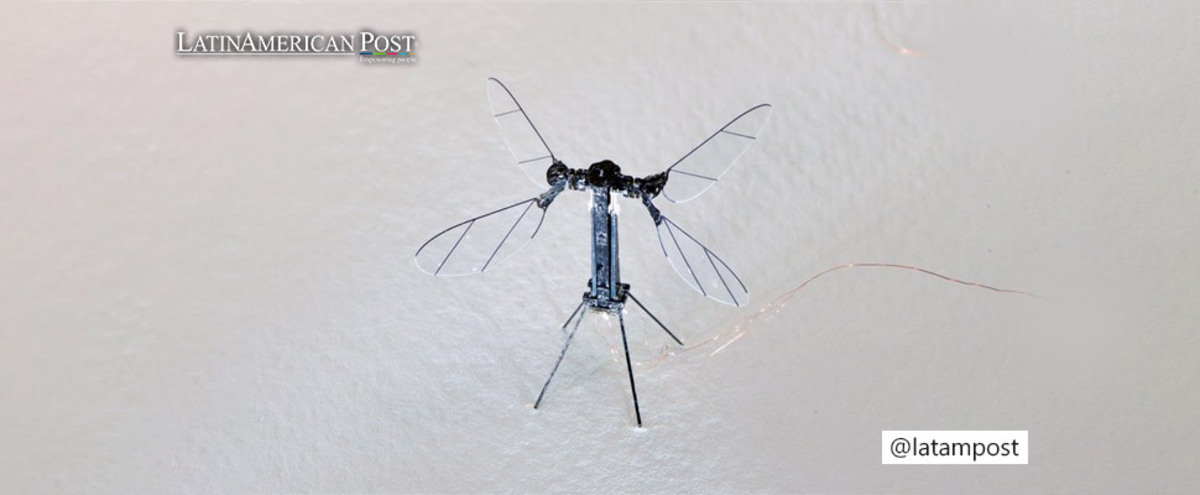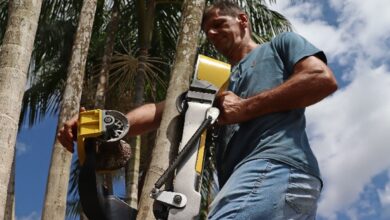5 Robots that Help Protect the Environment
In a world where the environmental crisis is increasingly pressing, robots emerge as unexpected allies that promise to be a solution that the environment needs.

Photo: NOAH T. JAFFERIS / E. FARRELL HELBLING /HARVARD MICROROBOTICS LABORATORY
LatinAmerican Post | Brandon Martínez Salazar
Escucha este artículo
Leer en español: 5 robots que ayudan a proteger el medio ambiente
Without a doubt, technology has been an unexpected ally in the search for sustainable solutions to the environmental problems facing the planet today. That is why robots in particular have proven to be invaluable tools in all aspects of environmental protection and conservation.
These automated machines are designed to play a key role in climate change mitigation, ecosystem protection and natural resource management. Today we can see robots that collect plastic waste in water basins to robots that can replant completely deforested forests. We tell you about 5 robots that help save the environment.
1.Dusbot
Throughout decades, humans have managed to produce a large amount of solid material that ends up negatively impacting the environment and all its ecosystems. A clear example of the issue is the amount of plastic and other waste that ends up in the oceans, increasingly damaging the lives of the species that inhabit it.
For this reason, in Italy they created a mobile robot called Dusbot, whose function is to collect the garbage in all the houses and then take it to recycling centers. Although this robot is currently a prototype, it really offers a positive solution to have a more precise control of solid waste and that it does not end up damaging the planet.
2.RoboBee
"RoboBee" is a tiny flying robot designed by Harvard University and whose main function is to pollinate crops and preserve biodiversity. According to the Harvard portal, “researchers at the Wyss Institute are developing RoboBees, artificial systems that could play countless roles in agriculture or disaster relief. A RoboBee is about half the size of a paper clip, weighs less than a tenth of a gram, and flies using engaged "artificial muscles" made of materials that contract when a voltage is applied.
Therefore, this autonomous robot can visit flowers and transport pollen efficiently, helping to offset declining bee populations around the world.
We suggest you read: Cloud Seeding: A Controversial Technique that Mexico Implements to Cause Rain
3.Plantoid
Researchers from the Istituto Italiano di Tecnologia, funded by the European Union, have developed a revolutionary project called PLANTOID, which seeks to design robots inspired by plants to contribute to the protection of the environment. Equipped with flexible roots, sensory leaves, and 3D-printed trunks, these robots could have applications in areas such as waste cleanup, precision agriculture, and space exploration. The objective is to take advantage of the efficiency and adaptability of plants to create technological solutions that help preserve our natural environment. The PLANTOID project promises to open up new possibilities at the intersection between robotics and environmental conservation.
4. Ecorobotix
It is a Swiss company that has developed an extraordinary robot, mainly for the agricultural sector. This device, which is endowed with artificial intelligence, searches through its computer vision to identify weeds in crop fields and, consequently, apply herbicides with high precision in the places that are necessary.
This is how this robot will manage to reduce negative impacts on agriculture and reduce the use of chemical products.
5. Yale Amphibious Turtle Robot
At Yale University, this amphibious turtle robot was developed that is capable of moving in aquatic and terrestrial ecosystems. It is one of the most striking robots and intends to continue developing to provide bio-monitoring and monitoring services for marine ecosystems. "Taking inspiration from land and sea turtles, we built a robot that fuses traditional rigid components and soft materials to radically increase the shape of its limbs and change its gait for locomotion in multiple environments," the researchers said in a publication of the Nature Magazine, where the process of its creation is pointed out.
Robots can definitely be a valuable tool in the fight to save the environment. As we have pointed out, they can help in waste monitoring and cleaning tasks, collecting waste and avoiding contamination in natural areas. Additionally, in agriculture, farm robots can optimize resource use and reduce pollution by applying fertilizers and pesticides precisely. They can also play an important role in the installation and maintenance of renewable energy systems, promoting the transition to cleaner energy sources. In short, robots offer technological solutions that will be key to addressing environmental challenges.




